FAQ about low temperature burns
Ms. Song is particularly afraid of the cold. Before going to bed every night, she must hold a hot water bottle so that she can sleep peacefully. A few days ago, as usual, she threw the hot water bottle on the bed and got into bed. When she woke up the next day, she found a blister the size of a broad bean on her left calf. Initially, Ms. Song didn't take it seriously, but a day later the blisters became red and swollen, the doctor diagnosed that this was a low-temperature burn. although the burnt area is not large, the damage has reached the level of a second-degree burn, and it would take at least a month to go to the hospital for dressing changes.

What temperature is a low temperature burn?
"I didn't feel hot, how could I be burned?" In response to Ms. Song's confusion, the doctor explained that the temperature is higher than the skin temperature, continuous contact with the skin, 70°C for 1 minute, and 60°C for more than 5 minutes, it can cause burns. This kind of burns caused by long-term contact of the skin with low-heat objects that are higher than body temperature are called low-temperature burns.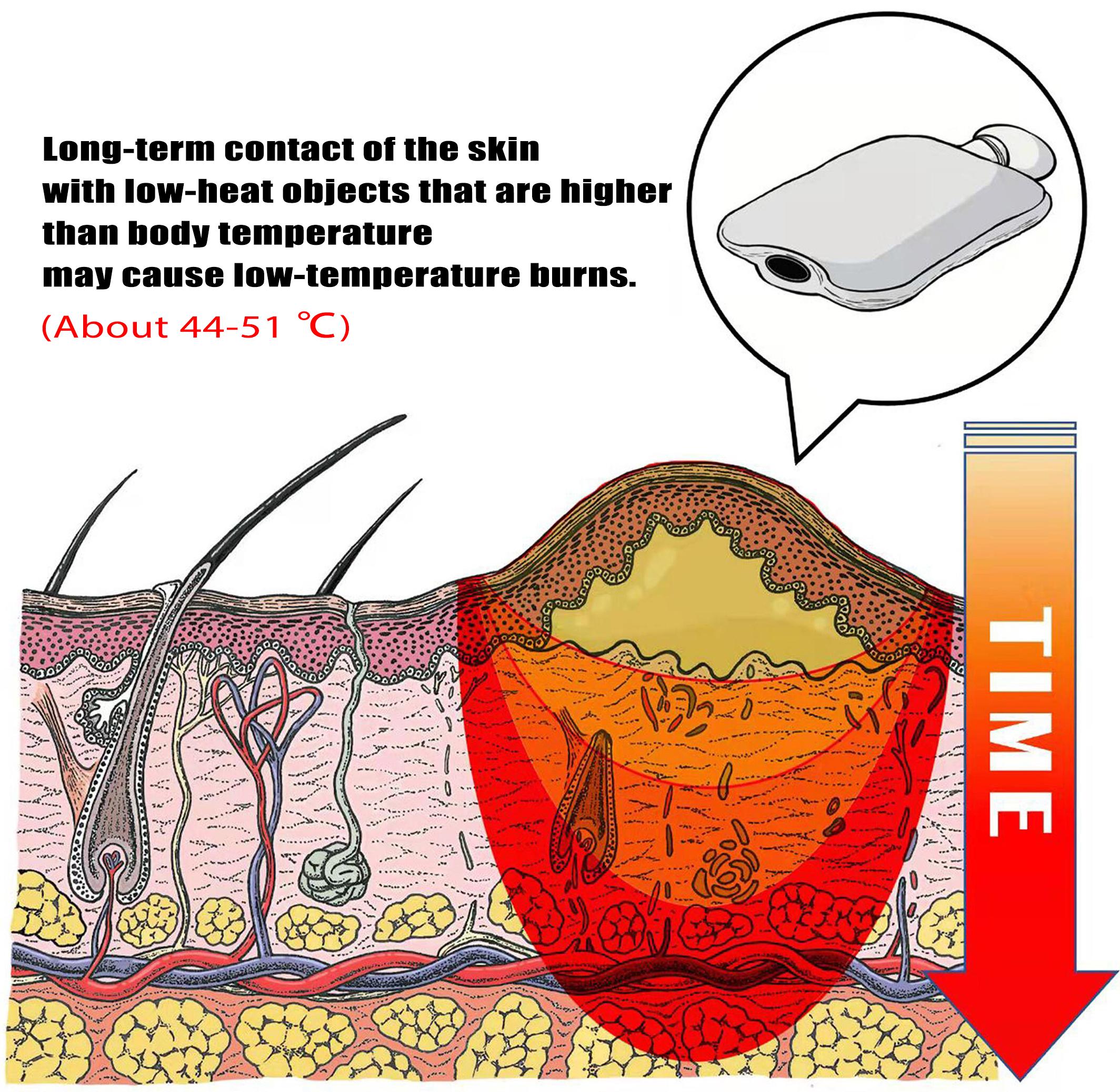
What causes low-temperature burns?
There are two reasons for the occurrence of "low-temperature burns". One is that the patient's skin is exposed to heat for a long time, and the other is that the patient's own sense is insensitive, or he is unable to actively reject the effect of this external force. Therefore, the elderly and children are at high risk of low-temperature burns. In addition, People who are anesthetized, people with movement disorders such as paralysis, or people who fall into deep sleep may also suffer low-temperature burns when using heating products.
What is the danger of low-temperature burn?
After being burned by low temperature, the surface of our skin often looks like only minor damage, such as redness, swelling, peeling, blisters, etc., but this does not mean that the symptoms are limited to this. If the wound is not treated in time, it is likely to cause necrosis of deeper tissues, and in the most serious case, bone may be injured.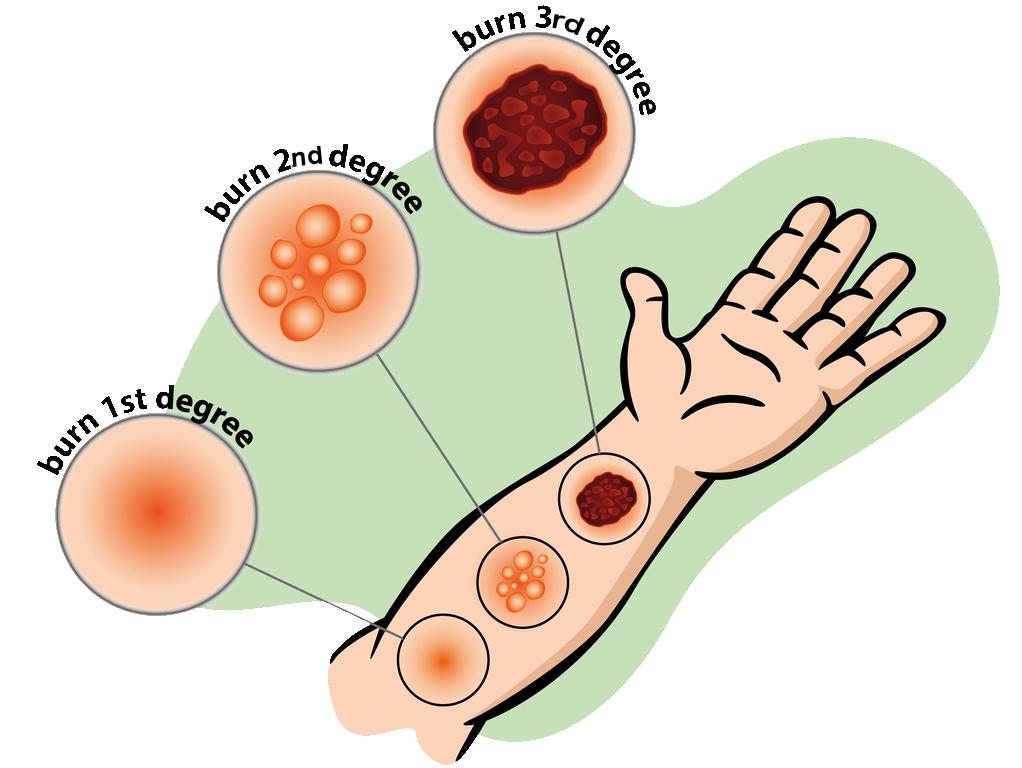
How do you treat a low-temperature burn?
Treatment options vary depending on the severity of the burn. The following indicators can be used to initially judge the degree of burns:
1. Mild burns: The skin lesions are shallow, no blisters, the skin is red and painful, and turns white when pressed.
2. Severe burns: blisters, dry and hard skin, and eschar.
For mild burns:
1.Remove the heat source and avoid touching the wound. Remove clothing and accessories, and try to avoid touching the wound.
2.Rinse the wound with tap water to cool it down, and rinse for no more than 5 minutes.
3.Burns with depth II or above require topical antibiotics to prevent infection, while mild burns with depth II or below can use moisturizing products.
For moderate to severe burns:
It needs to be sent to the hospital immediately for treatment by professional doctors. Before and on the way to the hospital, please note the following:
1. If it is difficult to remove clothes or accessories, do not drag them by force. You can send them to the doctor together.
2. Do not remove blisters or eschar by yourself.
3. When the wound is large, cover it with clean gauze or cloth, and do not use disinfectant to rinse it yourself.
4. Keep warm.
Note: Burn treatment needs to be assessed according to different degrees. It is not recommended to rely on personal judgment and must be handled with caution.
How to prevent low temperature burns?
1. Traditional hot water bottle made of rubber material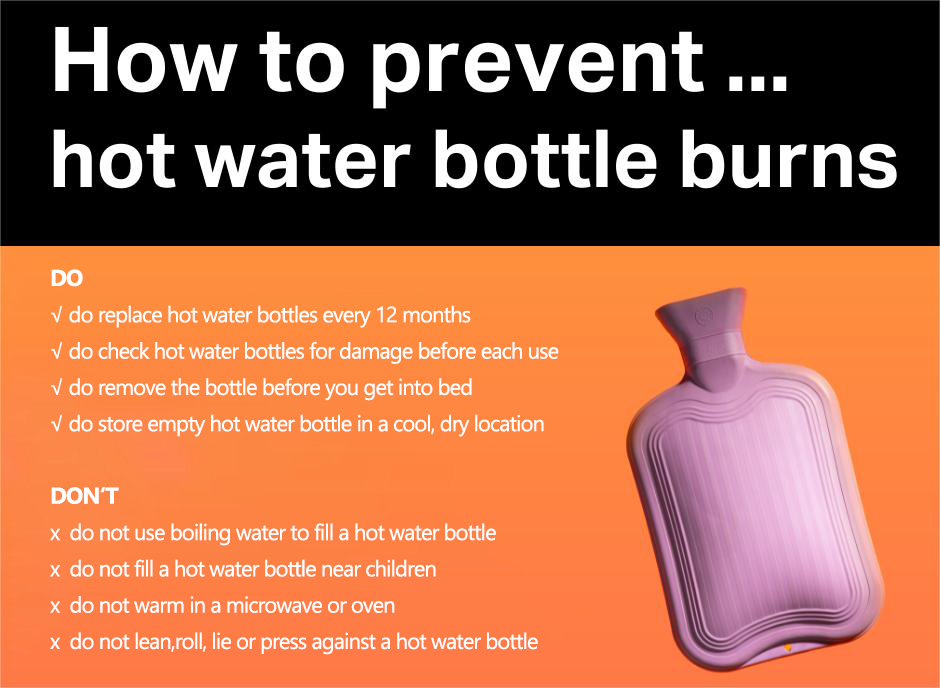
Do not fill it with boiling water, and do not fill it too full. Just fill it to 2/3 of the hot water bottle and squeeze out the remaining air.
The absence of air facilitates heat conduction and plays a heating role. It is best to wrap the outside of the hot water bottle with cloth for insulation so that the hot water bottle does not come into direct contact with the skin.
If you use a hot water bottle to warm your bed, it is best to take it out before going to bed.
2. Heat packs
The maximum heating temperature of heat packs can reach 65℃, and it can cause low-temperature burns within 5 minutes when used directly on the skin. Therefore, please pay attention when using it:
Do not stick it directly on the skin.
It is best to check your skin every hour when using it.
If you find erythema or other discomfort, please stop using it immediately.
If you have a heat pack on your body, do not use other heater to avoid scalding the skin due to excessive local temperature.
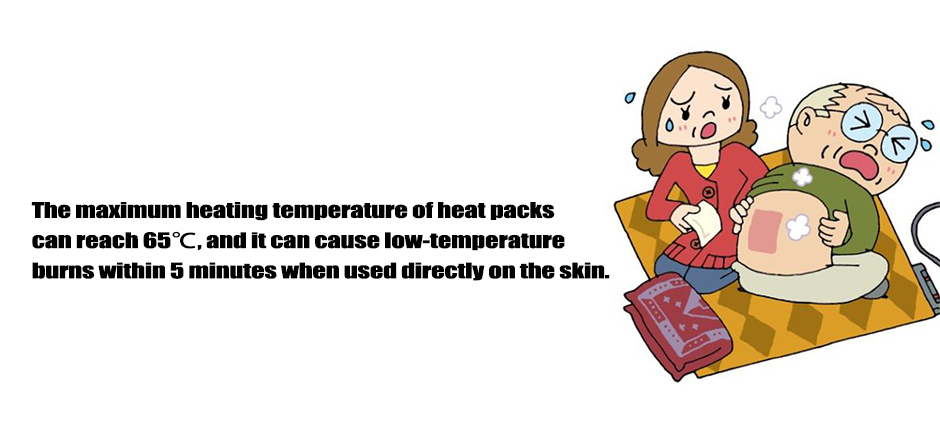 Focus on it! These people must not stick to heat packs
Focus on it! These people must not stick to heat packs
Pregnant women: If the patch is facing the uterus, it may cause uterine contraction, resulting in fetal malformation and premature birth.
Infants: Infants have very tender skin and less activity, which prevents low-temperature burns.
People with diabetes and blood circulation disorders, and people with low skin thermal.
sensitivity: These people have poor skin sensitivity and respond slowly to pain and itching, making them more susceptible to injury, so be careful when using it.
3. Rechargeable hot water bottle
The temperature of an electric hot water bottle after it is fully charged is generally 70 degrees Celsius,please keep it at a suitable temperature and do not make it too hot.
Do not place the hot water bottle directly on exposed skin to avoid burns.
Do not use it for too long, especially when sleeping, be sure to take the hot water bottle out of the bed to avoid continuous use for a long time.
Do not let the hot water bottle charge while heating to avoid safety issues.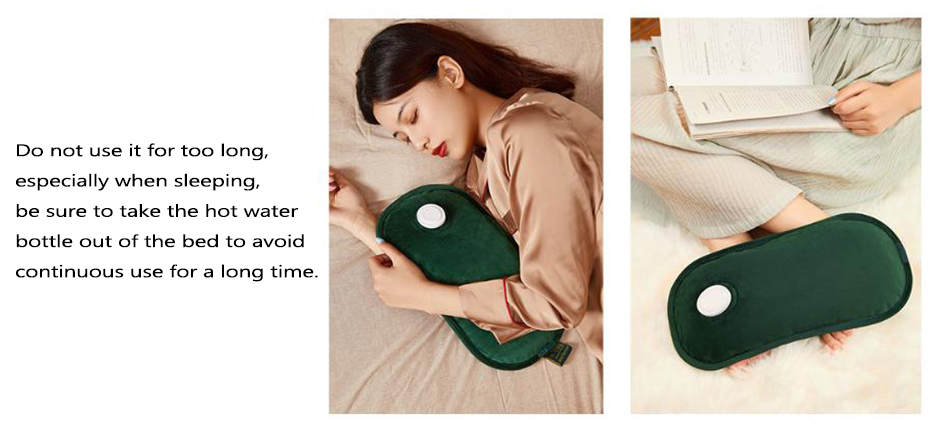
4. Electric blanket
Turn on the electric blanket an hour or two before going to bed and turn it off when you go to sleep.
Do not sleep with the electric blanket on all night.
Electric blankets should be laid flat on the bed and not folded for use.
Do not touch the electric blanket directly. There should be a sheet, blanket, thin cotton mattress, etc.
in between to prevent the electric heating wire from being damaged by rubbing back and forth. Pay attention to the safe use period.
According to relevant standards, it is recommended to replace the electric blanket with a new one within 5 years.
After the service life is exceeded, the protective insulation layer of the heating wire of the electric blanket may age and crack, and its insulation performance will decrease, which may easily cause safety hazards.
5. Heater
The heater should be at least 1 meter away from the body, and the position of the heater should be changed frequently. Long-term, single-site baking may cause low-temperature burns. Do not cover objects on the electric heater, keep it away from burning objects, keep the back more than 20 cm away from the wall, and keep it farther away from furniture, curtains and other flammable objects to avoid fire.
Website: www.cvvtch.com
Email: denise@edonlive.com
WhatsApp: 13790083059



